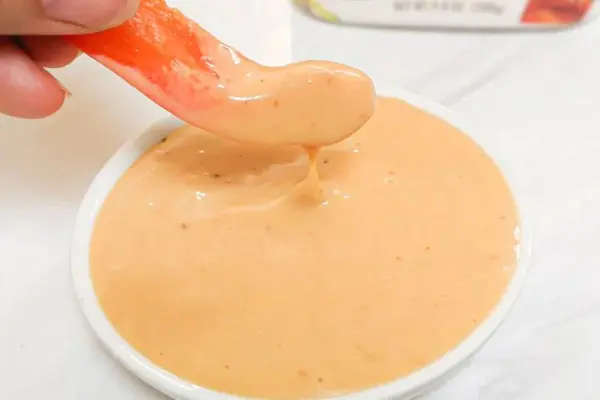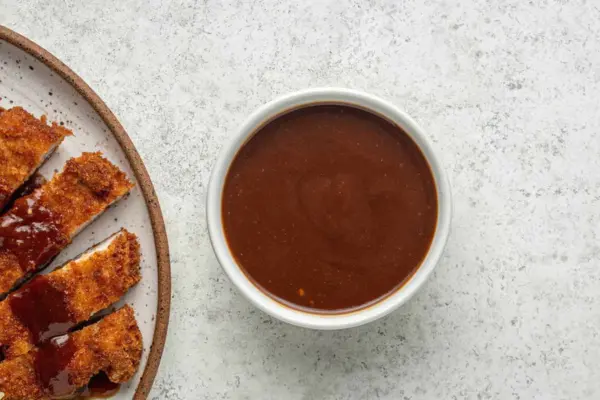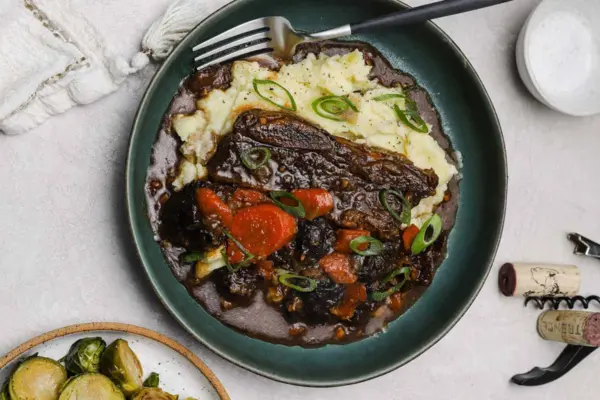Asian cuisine is known for its rich flavors and diverse range of dishes, and one such delectable treat is the Babakau recipe, a traditional dumpling that has won hearts across the world.
Originating from the Philippines, Babakau is a delightful combination of a soft, chewy dough encasing a savory filling.
Whether you are an experienced chef or a cooking enthusiast, giving these delicious dumplings a try will certainly be gratifying.
We’ll walk you through the process of making the ideal Babakau recipe in the convenience of your own home in this article.
Babakau Recipe
Recipe Details:
- Recipe Time: Approximately 1 hour and 30 minutes
- Course: Appetizer, Main Course, Snack
- Cuisine: Filipino, Asian
- Yield: Makes about 25-30 Babakau dumplings
Ingredients:
For The Dough:
- 2 cups all-purpose flour
- 3/4 cup warm water
- 1/4 teaspoon salt
- 1 tablespoon cooking oil
For The Filling:
- 1/2 pound ground beef
- 1/2 cup shrimp, peeled and chopped
- 2 cloves garlic, minced
- 1/4 cup minced onions
- 2 tablespoons soy sauce
- 1 tablespoon oyster sauce
- 1/2 teaspoon ground black pepper
- 2 tablespoons chopped green onions (scallions)
For Serving (Optional):
- Soy sauce
- Vinegar
- Chili sauce
Step-By-Step Cooking Instructions
1. Preparing The Dough
Start by mixing all-purpose flour, warm water, a dash of cooking oil, and a bit of salt in a big mixing basin.
The mixture needs to be worked into a smooth, elastic dough. For around 30 minutes, cover the dough with a moist cloth and allow it to rest.
2. Making The Filling
Mix the ground beef and shrimp in a separate bowl. Season with ground black pepper, soy sauce, oyster sauce, chopped garlic, and minced onions.
Ensure a uniform flavor distribution by properly combining all the ingredients. For a final freshness boost, add finely sliced green onions.
3. Assembling The Babakau
Take a small portion of the dough and flatten it into a circular disc using your hands or a rolling pin. Place a spoonful of the filling in the center of the disc.
Fold the dough over the filling, sealing the edges by pinching them together. Repeat this process until you have made all the dumplings.
4. Cooking The Babakau
To cook the Babakau, you have two options: steaming or frying. Place the dumplings in a steamer that has been lined with parchment paper or cabbage leaves for steaming.
They need to steam for around 15 minutes, or until the dough is completely cooked. You can pan-fry the dumplings in a little oil until they are golden brown if you prefer a crispier texture.

Nutrition Facts Per Serving:
(Assuming One Serving Is 2 Dumplings)
- Calories: Approximately 150 kcal Total Fat: 6g
- Saturated Fat: 2g
- Cholesterol: 25mg
- Sodium: 400mg
- Total Carbohydrates: 16g
- Dietary Fiber: 1g
- Protein: 8g
- Calcium: 30mg
- Iron: 1.2mg
- Potassium: 130mg
Tips For A Perfect Babakau
- Ensure that the dough is kneaded well for a smooth texture.
- Experiment with different fillings like chicken, beef, or vegetables for unique variations.
- Make sure to seal the dumplings properly to prevent the filling from leaking during cooking.
- Serve Babakau with a dipping sauce of your choice, such as soy sauce mixed with vinegar and chili for a tangy kick.
Variations And Customizations
While the traditional Babakau recipe is undoubtedly delightful, you can get creative and customize the dish to suit your taste preferences. For a vegetarian option, replace the meat with a mix of sautéed vegetables and tofu.
You can also experiment with the seasoning to create a sweet and savory combination by adding a hint of honey or brown sugar.
History And Origin Of Babakau
The roots of Babakau recipe can be traced back to the rich culinary heritage of the Philippines.
Over the years, this dish has evolved and been influenced by different cultures, resulting in a variety of fillings and cooking methods.
Today, Babakau is not only enjoyed in the Philippines but also cherished in various Asian communities and beyond.
Babakau In Different Cultures
As Babakau gained popularity, it traveled across borders and found its way into the hearts and kitchens of many cultures.
In Indonesia, it is known as “Siomay,” often served with peanut sauce. In Taiwan, “Sheng Jian Bao” is a similar dish that is pan-fried and enjoyed with a hot cup of tea.
Health Benefits Of Babakau
Apart from its mouthwatering taste, Babakau offers several health benefits. The combination of protein-rich meat and shrimp in the filling makes it a good source of essential amino acids.
The use of fresh vegetables and garlic adds vitamins and minerals to the dish, making it a nutritious option for any meal.
Serving And Enjoying Babakau
Babakau can be served as a delightful appetizer, a scrumptious main course, or a satisfying snack at any time of the day.
Arrange the steamed or fried dumplings on a plate and garnish with additional green onions for a pop of color.
Encourage your guests to dip the Babakau in their preferred sauce and relish the burst of flavors.
Conclusion
Anybody who indulges in the flavors of babakau will feel delight and satisfaction from this beautiful cuisine. This Asian dumpling has won over a lot of food lovers with its straightforward yet mouthwatering combination of bread and filling.
So why wait? Gather the ingredients, follow the step-by-step instructions, and treat yourself and your loved ones to a delightful serving of homemade Babakau recipe.
- Jet’s Ranch Recipe: Make The Famous Dip At Home - April 12, 2025
- James Hemings Macaroni And Cheese Recipe – History On A Plate - April 3, 2025
- French Dip Squares Recipe – Better Than A Sandwich! - March 25, 2025


